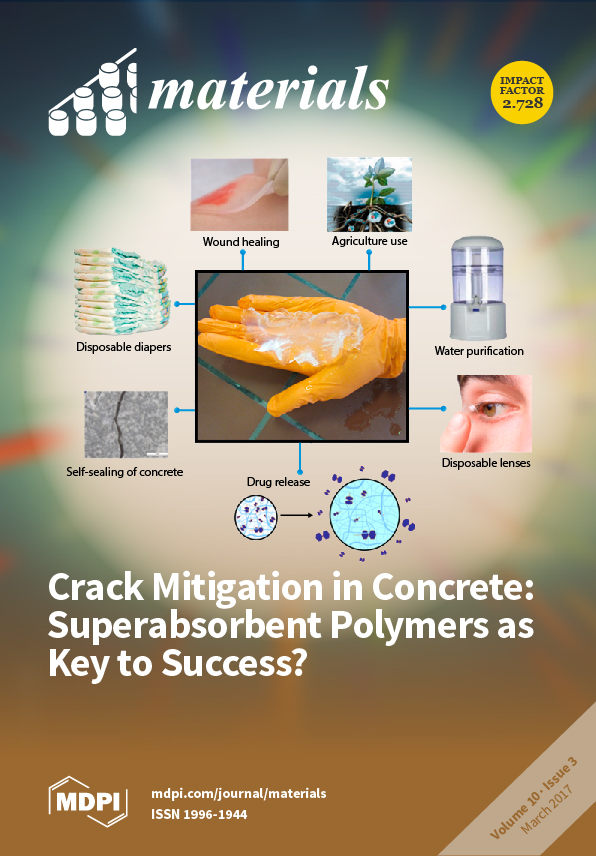Open AccessArticle
Biodegradation Resistance and Bioactivity of Hydroxyapatite Enhanced Mg-Zn Composites via Selective Laser Melting
by
Cijun Shuai 1,2, Yuanzhuo Zhou 1, Youwen Yang 1, Pei Feng 1, Long Liu 1, Chongxian He 1, Mingchun Zhao 3, Sheng Yang 4, Chengde Gao 1,* and Ping Wu 5,*
1
State Key Laboratory of High Performance Complex Manufacturing, Central South University, Changsha 410083, China
2
Key Laboratory of Organ Injury, Aging and Regenerative Medicine of Hunan Province, Changsha 410008, China
3
School of Material Science and Engineering, Central South University, Changsha 410083, China
4
Human Reproduction Center, Shenzhen Hospital of Hongkong University, Shenzhen 518053, China
5
College of Chemistry, Xiangtan University, Xiangtan 411105, China
Cited by 50 | Viewed by 6106
Abstract
Mg-Zn alloys have attracted great attention as implant biomaterials due to their biodegradability and biomechanical compatibility. However, their clinical application was limited due to the too rapid degradation. In the study, hydroxyapatite (HA) was incorporated into Mg-Zn alloy via selective laser melting. Results
[...] Read more.
Mg-Zn alloys have attracted great attention as implant biomaterials due to their biodegradability and biomechanical compatibility. However, their clinical application was limited due to the too rapid degradation. In the study, hydroxyapatite (HA) was incorporated into Mg-Zn alloy via selective laser melting. Results showed that the degradation rate slowed down due to the decrease of grain size and the formation of protective layer of bone-like apatite. Moreover, the grain size continually decreased with increasing HA content, which was attributed to the heterogeneous nucleation and increased number of nucleation particles in the process of solidification. At the same time, the amount of bone-like apatite increased because HA could provide favorable areas for apatite nucleation. Besides, HA also enhanced the hardness due to the fine grain strengthening and second phase strengthening. However, some pores occurred owing to the agglomerate of HA when its content was excessive, which decreased the biodegradation resistance. These results demonstrated that the Mg-Zn/HA composites were potential implant biomaterials.
Full article
►▼
Show Figures






